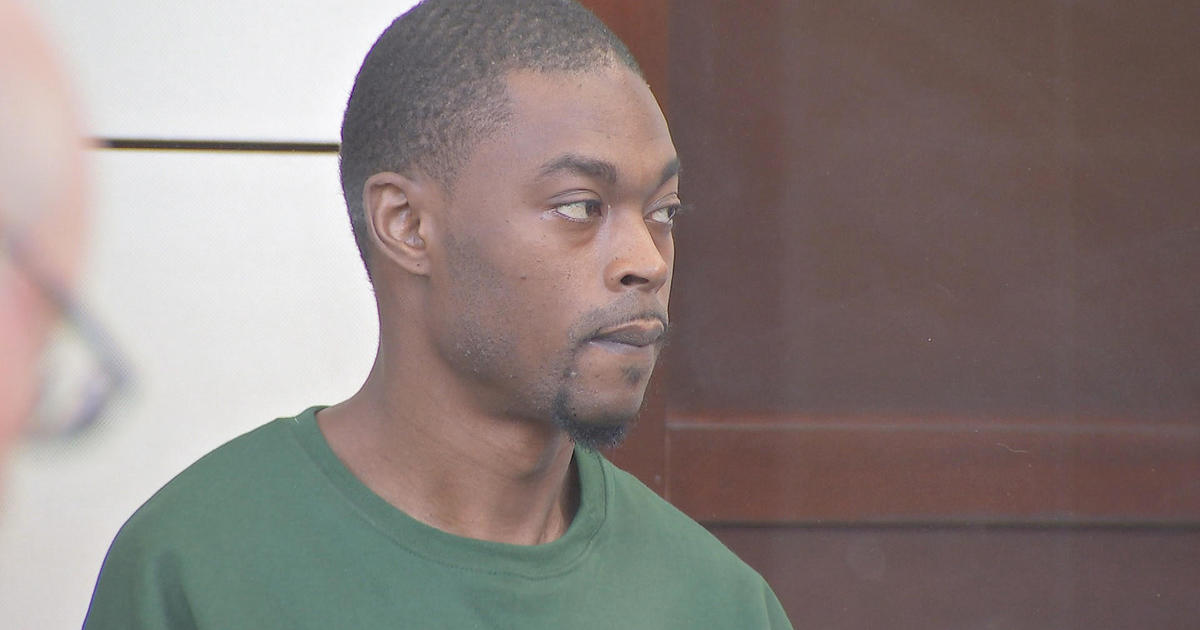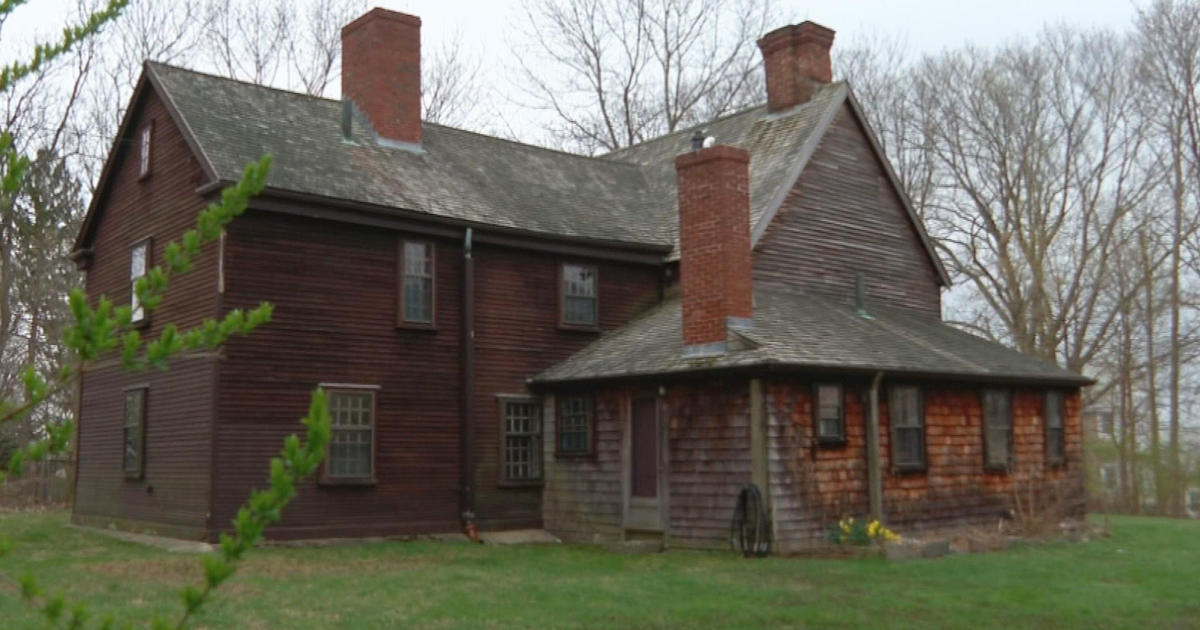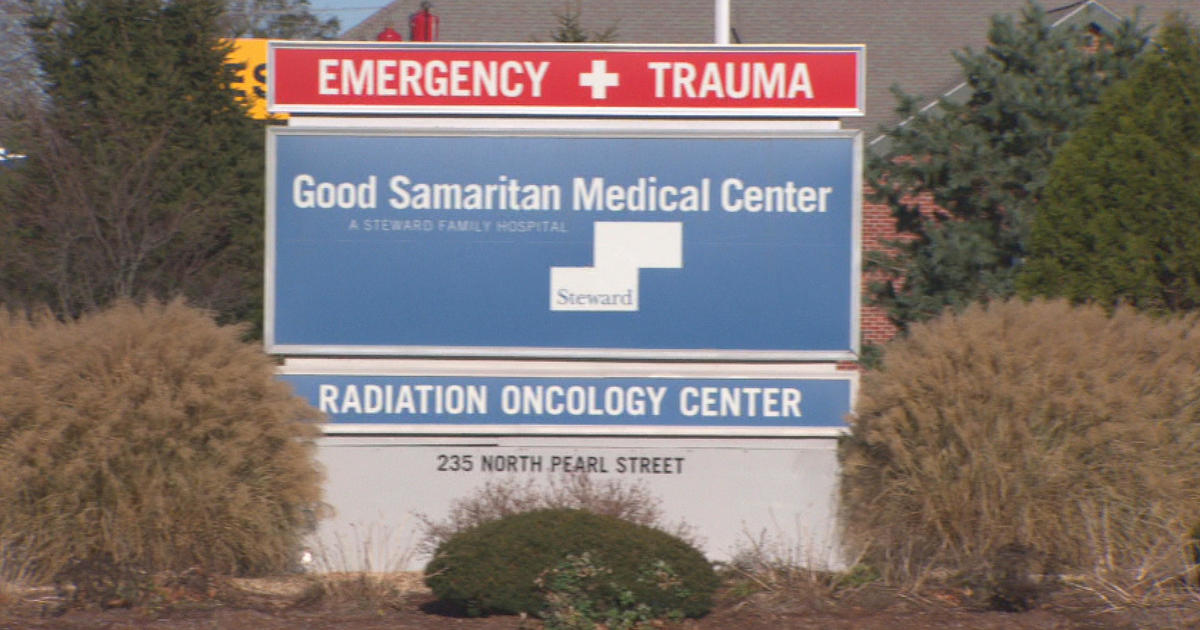Boston Marathon Bombing Victim Finds Help In Art
BOSTON (AP) — In one series of photographs, Ryan McMahon sits on her bed, with bottles of medication on a bedside table.
She is wearing a back brace and examining the mobility of her scarred arm.
She stares sadly into the camera, poses with her brace, then collapses on her bed with a look of frustration.
In another series, McMahon, wearing jeans and a flannel shirt, ties the brace and other medical paraphernalia to a tree, letting them hang.
In one shot, she throws her plastic brace and other equipment into the air. The camera catches her, smiling, as she reaches to the sky and lets them go.
McMahon, a survivor of the Boston Marathon bombings, has used photography and video to document her recovery. The art, she says, helps her process her experiences.
"If I'm working through something, I will turn the camera on myself and perform and do different things to deal with an issue," McMahon said. "It makes me more thoughtful about everything that happened."
McMahon is among more than 280 people injured by the Boston Marathon bombings on April 15, which also killed three people.
Visit: McMahon's GoFundMe Page
To this day, these survivors are continuing to cope with the physical and emotional aftereffects of the bombings. Some are learning to live with amputated limbs and lifelong scars. Others face post-traumatic stress disorder.
Each person's story is different.
McMahon's story is one of an artist. The attacks made her pursue her art more seriously. And her art is helping her heal.
"She doesn't want to be a victim. She doesn't want this to define her," said Ryan's mother, Donna McMahon, of Longmeadow. "Art's been really good therapy for her to get her feelings out, get her emotions out, try to make sense of what happened, which she might never do."
McMahon, 34, grew up in Longmeadow, where her parents John and Donna McMahon still live. Her father works in sales; her mother is a nanny.
Ryan McMahon graduated from Longmeadow High School in 1998, then studied photography and graphic design at the University of Massachusetts at Amherst. During and after college, she cared for people with developmental disabilities in residential homes.
After she moved to Boston in 2005, she began to pursue an arts-related career. She did graphic design and freelance photography for the Boston Phoenix, then worked as a photographer for Boston Mayor Thomas Menino's office for four years.
She earned a master's degree in arts administration from Boston University in 2011, then took a job in marketing for the Boston Mayor's Office of Arts, Tourism and Special Events.
McMahon was off on Patriots' Day and went to the Boston Marathon with friends, just for fun. When the bombs exploded, she was in the viewing stands near the finish line on Boylston Street. In the chaos, she fell off the bleachers, suffering a compression fracture in her back, a concussion and two broken wrists, one of which required surgery. She spent a week at Boston Medical Center.
When McMahon left the hospital, she moved to the home of her grandmother, Barbara Mallen, in Newton. There, she had to adjust to a new reality.
McMahon previously drove Mallen, 83, to doctors' appointments. Now, Mallen was helping McMahon shower and take care of herself.
McMahon hired a visiting nurse, struggled to use her wrists and learned to ask for help. She pushed herself to regain her independence, taking The Ride, the MBTA's transit service for those with disabilities, to doctors' appointments.
A former runner, she could only walk around her grandmother's house. McMahon tried returning to work in August, but still had regular therapy appointments and was in too much pain to sit at a computer all day.
Her first week out of the hospital, McMahon set up her camera on a tripod. She turned the camera on the staples that held her arm together, on her grandmother helping her dress. She documented her life in a cast, a sling and the back brace she wore through July.
"I really did want to understand how my body was affected, physically how that looked," McMahon said.
Her extended family visited from England and Ireland, and her parents and grandmother helped her, support which McMahon appreciated but at times found overwhelming.
"On the good days I was carefree and able to fully enjoy my family's company and create so many wonderful memories," McMahon wrote in an artistic statement which accompanied a recent exhibit of her work at Boston University. "On the bad days I needed to escape."
She was unable to write, so she recorded diary-style video entries.
"There were days I'd start talking about how uneasy, angry and heavy I felt," McMahon wrote in her statement. "Each time I sat down something new would develop. I used humor and got my nervous energy out by performing, dancing and letting go. By the end of every shoot I felt an overwhelming sense of strength and freedom."
Experts say the ability of art to heal is well-known.
Simone Alter-Muri, director of art therapy at Springfield College, said the process of making art helps with relaxation and stress reduction and can be a soothing experience in itself. In addition, she said, art can help people process traumatic events.
"Often, when someone is experiencing trauma, it's very hard to come to terms with it," Alter-Muri said. "It's not necessarily something that can be said in words. A picture, a photograph, can express a lot of things that would take a lot of words to express."
Dr. Terence Keane, director of the National Center for Post-traumatic Stress Disorder's behavioral science division and a professor of psychiatry at Boston University School of Medicine, pointed to Homer's "Iliad" and "Odyssey," epic Greek poems about the trauma of the Trojan War. "There's a very long tradition and history of using the arts to help people recover," Keane said.
"I think of the arts and literature as having major role in recovery in an individual level and also a communal level," Keane said. On a communal level, he said, art can capture a community's reaction to trauma in a way that helps people process it.
For individuals, Keane said, art can help people honestly express and deal with their emotional responses, while helping them "bind with their communities and look to the future in ways that can be quite healing."
Eight months after the bombings, McMahon is still healing.
She goes to physical therapy a couple of times a week and has not regained full mobility in her right wrist, which may need another surgery. She sees a therapist every other week to deal with the emotional impacts.
McMahon continues to film herself. She has a difficult time dealing with certain sounds — video footage of the blasts, calls of emergency medical technicians like those she heard in the emergency room, the screech of Velcro from the back brace she had to wear every time she got out of bed. She made a video featuring the sound of Velcro, which helped her work through that anxiety.
"Doing that video was like, alright, it's out there, it's gone," McMahon said. "That was a feeling I had, but I feel OK now."
The School of the Museum of Fine Arts in Boston accepted her as a student this fall. She has continued documenting her recovery and showing that work publicly for the first time. McMahon credits the bombings for inspiring her to pursue her art full-time.
"In the past, I would have second guessed. Maybe it's not practical. Maybe in the future," McMahon said. Now, she said, "If I feel passionate about something, driven about something, I just have to do it."
Jeannie Simms, McMahon's photography professor, said McMahon's ability to turn the camera on herself and document her healing shows "a sense of daring and curiosity in her open mind about the complexities of the situation." ''She's just so open about observing the process and its effects on her, her family, those close to her, the city, in a way that is not reactionary, that's not using it for political or rhetorical gain," Simms said. "She's just really open and embodying a really great artistic tradition to use art to try to gain understanding."
Simms said McMahon does not say much about her art, but lets the art speak for itself, revealing difficult personal details of her life. Among her classmates, Simms said, "There's sort of a quiet awe of both what she has endured and really her incredible open-mindedness and quiet observational power."
McMahon said her art has had a "huge impact" on her recovery and well-being. "I feel like I'm just shooting all the time. I feel like I appreciate how much is around me," McMahon said. "I can't imagine having dealt with it any other way for myself."
The nightmares McMahon experienced in the early days have subsided. She has returned to living with roommates in a Boston apartment. She started swimming and doing Pilates and hopes to begin running again.
The bombing ripped away her sense of security, but she has recreated an everyday life that feels safe again. She exhibited her photographs in the dean's office at Metropolitan College at Boston University and completed her first semester at School of the Museum of Fine Arts, showcasing a portfolio of work about her recovery.
She constantly reiterates how lucky she feels.
Donna McMahon said her daughter has always been a positive, upbeat person, and the bombings have strengthened Ryan's resolve to "make her life bigger and better." ''She's very excited about her life and what she wants to do and to live it to the fullest, because she knows that things can change in an instant," Donna McMahon said.
Ryan McMahon explains it like this: "(Art) helps me to just be present in this event that happened to me and my family and so many other people, and know that I do have to live every day in a big, big way, and the way I always wanted to do it."
Copyright 2014 The Associated Press. All rights reserved. This material may not be published, broadcast, rewritten or redistributed.



